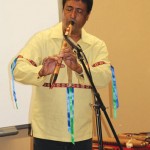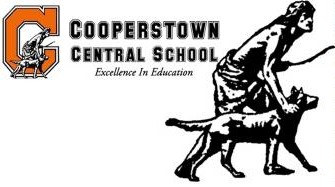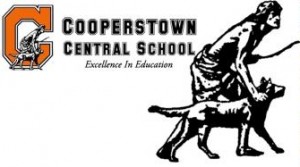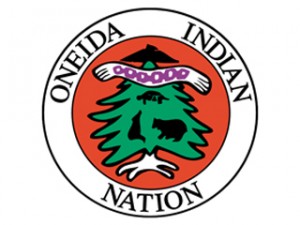By Louise Erdrich
Published: February 26, 2013
As featured in:
The New York times Opinion Pages
MINNEAPOLIS
TWO Republicans running for Congressional seats last year offered opinions on “legitimate rape” or God-approved conceptions during rape, tainting their party with misogyny. Their candidacies tanked. Words matter.
Having lost the votes of many women, Republicans now have the chance to recover some trust. The Senate last week voted resoundingly to reauthorize the Violence Against Women Act, the 1994 law that recognized crimes like rape, domestic abuse and stalking as matters of human rights.
But House Republicans, who are scheduled to take up the bill today and vote on it Thursday, have objected to provisions that would enhance protections for American Indians, undocumented immigrants and gay, lesbian, bisexual and transgender youth, among other vulnerable populations.
Here in Minneapolis, a growing number of Native American women wear red shawls to powwows to honor survivors of sexual violence. The shawls, a traditional symbol of nurturing, flow toward the earth. The women seem cloaked in blood. People hush. Everyone rises, not only in respect, for we are jolted into personal memories and griefs. Men and children hold hands, acknowledging the outward spiral of the violations women suffer.
The Justice Department reports that one in three Native women is raped over her lifetime, while other sources report that many Native women are too demoralized to report rape. Perhaps this is because federal prosecutors decline to prosecute 67 percent of sexual abuse cases, according to the Government Accountability Office. Further tearing at the social fabric of communities, a Native woman battered by her non-Native husband has no recourse for justice in tribal courts, even if both live on reservation ground. More than 80 percent of sex crimes on reservations are committed by non-Indian men, who are immune from prosecution by tribal courts.
The Minnesota Indian Women’s Resource Center says this gap in the law has attracted non-Indian habitual sexual predators to tribal areas. Alexandra Pierce, author of a 2009 report on sexual violence against Indian women in Minnesota, has found that there rapes on upstate reservations increase during hunting season. A non-Indian can drive up from the cities and be home in five hours. The tribal police can’t arrest him.
To protect Native women, tribal authorities must be able to apprehend, charge and try rapists — regardless of race. Tribal courts had such jurisdiction until 1978, when the Supreme Court ruled that they did not have inherent jurisdiction to try non-Indians without specific authorization from Congress. The Senate bill would restore limited jurisdiction over non-Indians suspected of perpetrating sex crimes, but even this unnerves some officials. “You’ve got to have a jury that is a reflection of society as a whole, and on an Indian reservation, it’s going to be made up of Indians, right?” said Senator Charles E. Grassley of Iowa, the top Republican on the Senate Judiciary Committee. “So the non-Indian doesn’t get a fair trial.”
Leaving aside the fact that most Native defendants tried in the United States face Indian-free juries, and disregarding the fulsome notion that Native people can’t be impartial jurists, Mr. Grassley got his facts wrong. Most reservations have substantial non-Indian populations, and Native families are often mixed. The Senate version guarantees non-Indians the right to effective counsel and trial by an impartial jury.
Tribal judges know they must make impeccable decisions. They know that they are being watched closely and must defend their hard-won jurisdiction. Our courts and lawyers cherish every tool given by Congress. Nobody wants to blow it by convicting a non-Indian without overwhelming, unshakable evidence.
Since 1990, when Joseph R. Biden Jr., then a senator from Delaware, drafted the original legislation, the Violence Against Women Act has been parsed and pored over. During reauthorizations in 2000 and 2005, language on date rape and orders of protection was added. With each iteration, the act has become more effective, inclusive and powerful. Without it, the idea that some rape is “legitimate” could easily have been shrugged off by the electorate.
Some House Republicans maintain that Congress lacks the authority to subject non-Indians to criminal trials in tribal court, even though a Supreme Court opinion from 2004 suggests otherwise. Their version of the bill, as put forward by the majority leader, Eric Cantor of Virginia, would add further twists to the dead-end maze Native American women walk when confronting sexual violence. John Dossett, general counsel for the National Congress of American Indians, said it would create “more off ramps for defendants by adding multiple levels of removal and appeal, including the right to sue tribes.” A compromise backed by two other Republicans, Darrell Issa of California and Tom Cole of Oklahoma, is vastly preferable to the Cantor version. It would offer a non-Indian defendant the right to request removal of his case to a federal court if his rights were violated.
What seems like dry legislation can leave Native women at the mercy of their predators or provide a slim margin of hope for justice. As a Cheyenne proverb goes, a nation is not conquered until the hearts of its women are on the ground.
If our hearts are on the ground, our country has failed us all. If we are safe, our country is safer. When the women in red shawls dance, they move with slow dignity, swaying gently, all ages, faces soft and eyes determined. Others join them, shaking hands to honor what they know, sharing it. We dance behind them and with them in the circle, often in tears, because at every gathering the red shawls increase, and the violence cuts deep.
Louise Erdrich is the author, most recently, of “The Round House.”













